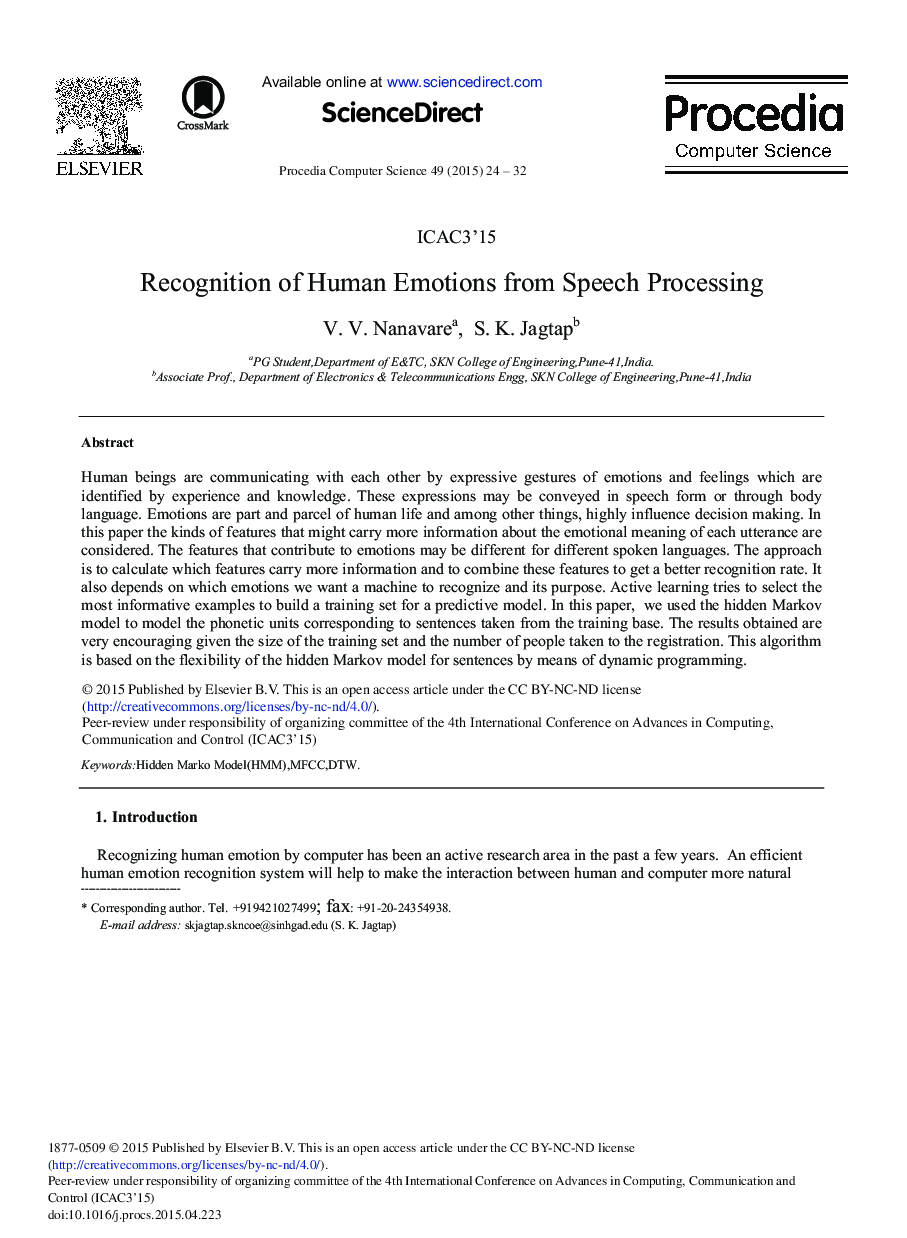| Article ID | Journal | Published Year | Pages | File Type |
|---|---|---|---|---|
| 486103 | Procedia Computer Science | 2015 | 9 Pages |
Human beings are communicating with each other by expressive gestures of emotions and feelings which are identified by experience and knowledge. These expressions may be conveyed in speech form or through body language. Emotions are part and parcel of human life and among other things, highly influence decision making. In this paper the kinds of features that might carry more information about the emotional meaning of each utterance are considered. The features that contribute to emotions may be different for different spoken languages. The approach is to calculate which features carry more information and to combine these features to get a better recognition rate. It also depends on which emotions we want a machine to recognize and its purpose. Active learning tries to select the most informative examples to build a training set for a predictive model. In this paper, we used the hidden Markov model to model the phonetic units corresponding to sentences taken from the training base. The results obtained are very encouraging given the size of the training set and the number of people taken to the registration. This algorithm is based on the flexibility of the hidden Markov model for sentences by means of dynamic programming.
